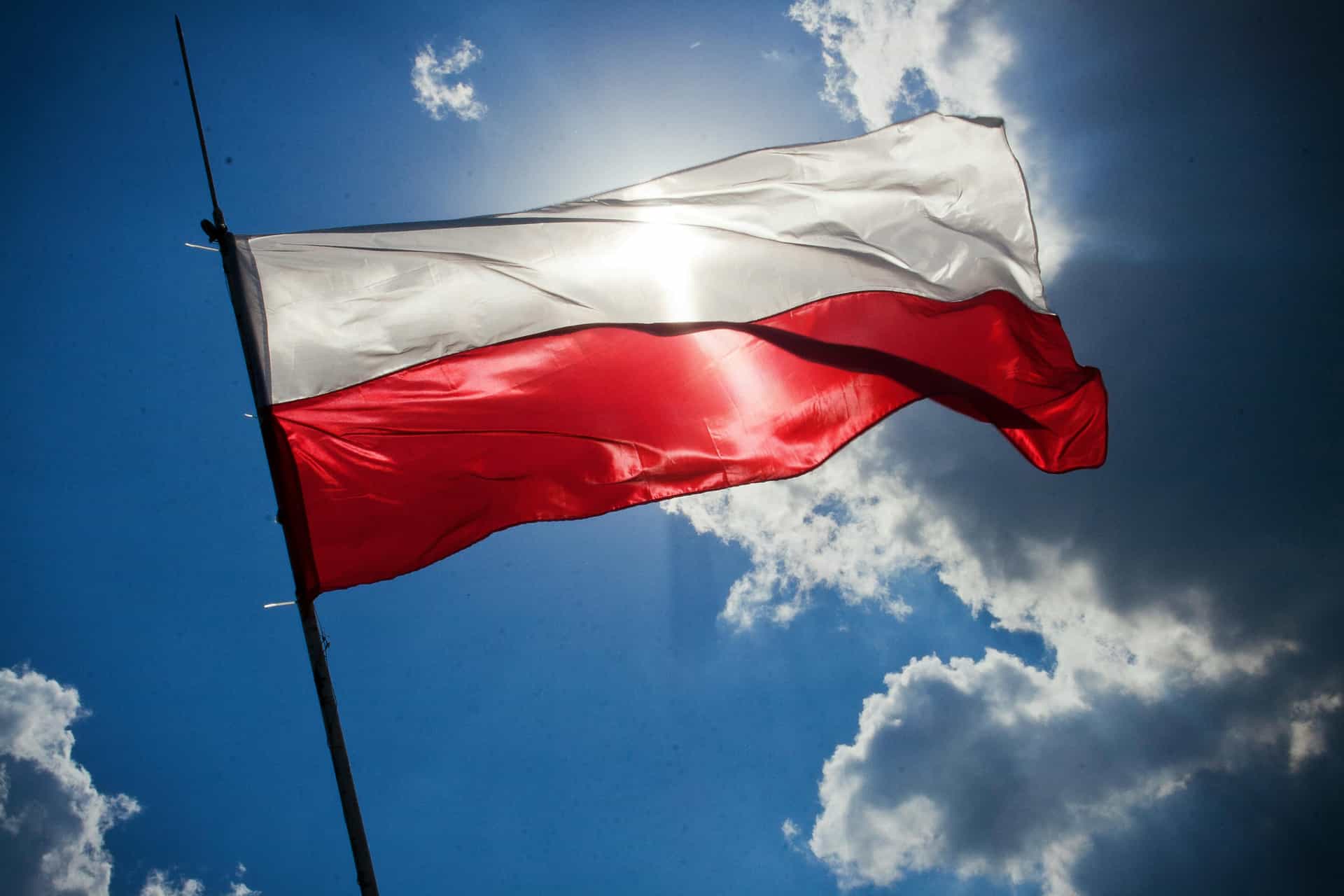
International Employment Laws
2025 Guide: Work Permits and Work Visas in Poland
Interested in working in Poland, or moving your whole team there? Here is what you need to know about work permits and visas for Poland.
Lucas Botzen
International Recruitment
22 mins read



Our Employer of Record (EOR) solution makes it easy to hire, pay, and manage global employees.
Book a demois no longer reserved for global giants. Today, companies of all sizes are building teams across the world to access top talent, bring in new perspectives, and stay competitive in a fast-moving market. But global recruitment is complex. It requires more than just job postings and online interviews. You need a thoughtful strategy that adapts to cultural differences, local regulations, and changing expectations.
A successful international hiring strategy is not about doing more. It is about doing it smarter. From tailoring outreach in different countries to streamlining communication and staying compliant, each step plays a role in shaping the candidate experience and long-term success.
At Rivermate, we partner with organizations to make global recruitment simple, scalable, and compliant. Whether you are just starting to explore new markets or managing hundreds of candidates across continents, this guide will help you attract, hire, and retain talent in a way that truly works.
Let’s dive in and reshape how you recruit globally.
To build a successful international hiring strategy, companies must think beyond borders and time zones. You need more than a list of open roles. You need a plan that connects your business goals to the way people work, communicate, and apply for jobs in different regions.
A strong global recruitment strategy should focus on both structure and adaptability. You need to reach job seekers from different countries while staying aligned with local regulations, cultural norms, and candidate expectations. It is not just about volume. It is about building connections that last.
Here are the key elements of a truly effective global recruiting strategy:
Clear goals and workforce planning to understand what roles you need, where, and when
Knowledge of local compliance requirements so you can stay aligned with regulations in every region
Platform selection to help you source candidates efficiently across markets
Strong employer branding that resonates with global audiences and communicates your values clearly
Personalized candidate experience that adapts to different cultures and backgrounds
Tools that support scalability and tracking, such as an applicant tracking system or integrated background screening
A reliable recruitment partner like Rivermate to guide you through complex international hiring processes
Rivermate helps companies shape global recruitment strategies that balance local insight with international reach. Whether you are hiring remotely or building distributed teams, we help you focus on creating a recruitment process that attracts and retains talent anywhere in the world.
A global hiring strategy is not just about scale. It is about precision and personalization. Hiring people from different parts of the world requires more than translation. It takes a strong understanding of what makes each market unique.
Every region has its own approach to hiring. Some countries prioritize detailed resumes and formal interviews. Others value creative portfolios, casual video calls, or fast hiring cycles. If you are recruiting Asia, Europe, or Latin America, your strategy must reflect these cultural expectations.
You also need to know where your audience spends time. Whether it is LinkedIn, regional job platforms, or social media channels, the tools you use can shape your visibility and influence your ability to attract jobseekers. A global recruiting strategy should be both structured and flexible, combining strong planning with the ability to shift when needed.
Tailoring your approach is one of the most important parts of recruiting globally. You cannot apply the same playbook everywhere. What attracts candidates in one country might not appeal in another. Language, tone, benefits, and even job titles can influence how your company is perceived.
This is where cultural sensitivity and local insight make all the difference. Learning about the culture and values of your target markets helps you build authentic connections. It also helps you create content and job postings that feel relevant and human.
One smart way to localize your strategy is by using market-specific resources like Rivermate’s recruitment guide for Spain. These pages offer insights into talent pools, compliance rules, and outreach tips tailored to each region. They also help you understand how to communicate in a way that builds trust with potential candidates.
Personalization is not just about making a good impression. It directly improves your candidate experience and retention outcomes.
Recruiting across borders requires a careful balance of structure and flexibility. You need clear processes that still leave room to adapt to local customs, time zones, and communication styles. The following best practices will help international recruiters stay organized, inclusive, and effective.
Here are some proven best practices for global recruiting:
Use flexible processes that can adapt to legal and cultural differences across markets
Leverage local market data to better understand salary benchmarks, hiring trends, and timelines
Focus on employer branding that feels authentic in different parts of the world
Invest in onboarding programs that go beyond paperwork and help new hires feel connected
Foster diversity and inclusion from the first interaction to create a sense of belonging
Integrate technology like ATS platforms and global background check tools to support your workflow
These practices are not just about efficiency. They help companies provide a better experience for global candidates and increase retention rates over time. For those looking to scale recruitment globally, Rivermate’s international recruitment agency offers tailored support that simplifies complexity and connects you with top talent around the world.
Attracting talent across the world begins with visibility, but success comes from connection. The best global recruitment strategies go beyond job postings. They focus on building real relationships with potential candidates and offering a personalized, respectful experience.
Today’s job seekers care about more than a paycheck. They want a company that aligns with their values, supports professional growth, and offers flexibility. This means you need to focus on creating a global hiring strategy that feels human. One that communicates who you are as a company and why people should join your team, no matter where they are.
Your global recruitment campaign should speak directly to your audience. Make sure your messaging is inclusive, accessible, and culturally aware. Highlight your company’s mission, your approach to diversity and inclusion, and how you support remote teams. And do not forget about the follow-up. A smooth application process and timely communication can make a huge difference in how candidates experience your brand.
When you position your company as a thoughtful, people-first employer, it becomes easier to stand out in a competitive talent market.
Strong employer branding is one of the most powerful tools in global recruiting. It shapes how candidates perceive your company before they ever apply. A clear, consistent message helps you attract the right people and build trust across borders.
Your employer brand should reflect your values, your workplace culture, and the experience you offer to employees. Showcasing real stories, testimonials, and content that highlights team diversity, career growth, and global collaboration is a great way to make your message resonate.
It is important to tailor your branding content to reflect cultural differences. What inspires candidates in the United States might not have the same impact in Southeast Asia or the Middle East. This is where localization, market research, and a strong creative strategy come in.
Creating content that feels authentic in different parts of the world helps companies attract candidates who not only have the right skills but also align with the company’s values. This is especially effective when paired with outreach through platforms like LinkedIn, regional job boards, and even social media.
Reaching global talent requires access to the right platforms. While LinkedIn remains a leader in global recruitment, it is not always the most effective tool in every region. Countries may have preferred local platforms, and some talent pools are more active on niche job boards or even within community-based spaces online.
To optimize your international hiring strategy, recruiters should consider a mix of platforms that reflect the habits of job seekers across the world. This helps expand visibility and ensures that you are not missing out on qualified candidates in untapped regions.
Here are a few platform types to consider when hiring globally:
Global professional networks, like LinkedIn and Indeed
Country-specific job boards, such as Glassdoor in the United States or InfoJobs in Spain
Freelancer and remote work platforms, like Remote OK or We Work Remotely
Niche or industry-specific sites for tech, design, education, and more
Social media channels, including Facebook groups, Twitter, and even TikTok for employer branding
ATS integrations that connect with multiple channels at once
Partnering with an international recruitment agency like Rivermate provides access to trusted tools and platforms that are already tailored to specific markets. It also gives you support in navigating the tools used by local recruiters, ensuring that your outreach is aligned with the expectations of each audience.
Whether you are hiring in Spain, South Africa, or Singapore, using the right platforms increases the likelihood that your job postings will connect with qualified applicants and result in a positive experience.
Hiring does not end with a contract. It begins with a connection. One of the most overlooked yet essential parts of any global hiring strategy is the ability to create a sense of belonging early in the candidate journey.
International candidates often face additional barriers—language, time zones, visa questions, or uncertainty about workplace culture. It is important to recognize these challenges and actively work to make people feel welcomed and supported from the first touchpoint.
Personalize communication wherever possible. Acknowledge cultural differences with curiosity and respect. Provide clear information about the company, the team, and what candidates can expect next. Offer flexibility during interviews and consider adding orientation content that introduces your company’s values and team dynamics.
When people feel seen, heard, and valued, they are more likely to accept offers and stay longer. Creating a sense of belonging helps improve retention rates, strengthens diversity, and builds a team that is connected across borders.
In international hiring, communication is not just a soft skill. It is the backbone of every successful strategy. When recruiting across the world, you are not just bridging distances. You are bridging cultures, languages, expectations, and even time zones.
Strong communication ensures that candidates feel informed, respected, and engaged. It helps recruiters stay aligned with teams in different countries and builds trust throughout the hiring process. Misunderstandings can lead to delays, missed opportunities, or even losing top talent.
Whether you are managing high-volume outreach or personal interviews, your communication style needs to be clear, timely, and culturally aware. This is not just about logistics. It is about creating a candidate experience that reflects your company’s values and builds long-term connections.
Hiring globally means interacting with candidates who may interpret tone, timing, and professionalism differently. To avoid confusion and foster trust, your communication approach should be flexible and inclusive.
Here are practical strategies to improve cross-cultural communication in recruitment:
Research cultural norms before reaching out, especially for formal versus casual tone
Use simple and direct language that avoids idioms or slang
Confirm understanding instead of assuming clarity, especially during interviews or onboarding
Offer communication in multiple formats, such as email, voice, or video, to match preferences
Be patient with response times due to time zone differences or local holidays
Provide translations or localized content when needed to ensure clarity
Stay aware of nonverbal cues during video calls, which may vary in meaning across cultures
Cross-cultural communication is not about perfecting every interaction. It is about showing that your company values differences and is committed to making the process fair and respectful for everyone involved.
Personalization is one of the most powerful ways to stand out in the global talent market. Candidates want to feel seen, not just sorted into a system. This is especially true when recruiting internationally, where cultural and personal backgrounds shape how people engage with potential employers.
Start with small but meaningful touches. Use the candidate’s name. Reference their location or professional background in your communication. Share details about the team they would join or the projects they would be part of. If you are working with a recruitment partner like Rivermate, ensure that the communication reflects the candidate’s region and aligns with local customs.
Personalization builds trust. It makes people feel like more than a number. And it shows that your company is not just filling roles, but building relationships with the people behind them.
Consistency and speed are key when hiring globally. Candidates across the world expect timely responses, clear instructions, and updates throughout the process. Delays or mixed messages can make even the most promising company lose credibility.
Streamlining communication starts with defining who sends what, when, and how. Use applicant tracking systems to manage updates, feedback, and status changes. Automate certain touchpoints without losing the human touch. Create templates that can be personalized, ensuring every message feels intentional.
It also helps to create internal documentation for your global recruitment team. This keeps messaging aligned and ensures that candidates receive the same high-quality experience, no matter where they apply from.
When your communication process is clear, efficient, and respectful, it does more than save time. It elevates your employer brand and leaves a lasting impression on every candidate.
Talent acquisition is not just about filling open positions. It is about shaping the future of your company by building teams that are aligned, motivated, and ready to grow with your business. When you are hiring across countries and time zones, the process must be even more thoughtful.
To optimize global recruitment, you need clarity, consistency, and tools that support both speed and quality. From sourcing talent to onboarding new hires, every step should be built around efficiency, personalization, and compliance. The most effective hiring strategies are not the most complex. They are the ones that prioritize what truly matters, connection, adaptability, and results.
The Future of Jobs Report by the World Economic Forum shows that companies are shifting toward more flexible, international, and skills-based hiring approaches. This reinforces the need to create processes that can adapt to global talent trends while maintaining structure and inclusivity.
Technology has completely transformed how companies recruit across the world. The right tools do not just make the process faster. They make it smarter and more human.
Applicant tracking systems help manage high-volume pipelines with ease. Video interview platforms connect recruiters with candidates anywhere in the world. AI-powered sourcing tools identify strong matches quickly and reduce manual tasks. All of this frees up time so your team can focus on what matters most—building real relationships.
Analytics provide insight into where your process works and where it needs adjustment. From measuring candidate experience to identifying drop-off points, data helps you make informed decisions and refine your approach.
Using modern technology also helps companies stay competitive in fast-moving talent markets. And with Rivermate, you get access to a platform that supports international hiring from end to end. That includes compliance, onboarding, and payroll, all in one place.
Innovation is not about replacing people. It is about helping your team work better together.
Compliance is a critical part of international recruitment. Each country has its own rules on taxes, contracts, working hours, data privacy, and employment classification. If you are not fully aligned with those rules, you are taking a serious risk.
Prioritizing compliance shows global candidates that your company respects their rights and takes its responsibilities seriously. It also protects your business from legal trouble and financial penalties. Staying informed about hiring and working conditions around the world is essential, since labor laws and regulatory expectations vary widely by location and continue to evolve.
This is especially important when hiring in multiple countries at once. Staying up to date with local laws requires constant attention and a clear understanding of how legal frameworks differ across regions.
When compliance is built into your hiring process, you create a strong foundation for long-term success.
One of the smartest ways to improve your global hiring strategy is by building strong international talent pools. These are groups of potential candidates who have already shown interest in your company or match your ideal profile.
Having a well-organized pool of qualified professionals allows you to move faster when roles open up. It also gives your team insight into market trends, talent availability, and candidate behavior in different regions.
Managing talent pools effectively means staying in touch. This can include sending updates about your company, sharing relevant content, or simply checking in to maintain the connection. Personalized outreach goes a long way in keeping candidates engaged and building trust.
Talent pools also help recruiters identify gaps. For example, you may notice you have strong leads in one part of the world but need to increase outreach in others. With this information, you can adjust your sourcing strategy and improve coverage across your target regions.
At Rivermate, we help companies build and maintain global talent pools that drive long-term hiring success and help you stay ready for future growth.
Global recruitment opens the door to opportunity, but it also brings several challenges that companies must navigate carefully. Hiring across borders means managing a wide range of legal, cultural, and logistical factors that can affect your success.
Here are some of the most common challenges in global hiring, and how to overcome them:
Compliance with local laws
Every country has different employment regulations, tax rules, and labor laws. Staying aligned with all of them requires local knowledge and constant updates. Working with a trusted partner like Rivermate helps you remain compliant while hiring in multiple regions.
Cultural differences
Misunderstandings can occur when communication styles, values, or expectations are not aligned. Cultural training, localized messaging, and inclusive outreach strategies can help bridge the gap.
Time zone and language barriers
Scheduling interviews or onboarding sessions across different time zones can be frustrating. Language differences can also impact clarity. Planning ahead, offering flexible options, and using clear communication tools will help reduce friction.
Access to the right platforms
Relying only on global job boards limits your reach. You may miss out on strong candidates who use local or niche platforms. Tailoring your platform mix to each region improves visibility and candidate quality.
Retention challenges
Attracting candidates is only half the battle. If you do not invest in engagement and support, you risk high turnover. A personalized, thoughtful onboarding experience and a strong sense of belonging are key to long-term retention.
The key to overcoming these challenges is staying flexible, informed, and proactive. With the right recruitment strategy and a global partner by your side, every obstacle becomes a chance to improve.
Before you can fix a problem, you need to recognize it. One of the most common issues in global recruitment is a mismatch between strategy and outcome. You may have outreach campaigns that are not attracting the right candidates. Or you may be losing great applicants due to delays, unclear communication, or lack of personalization.
Look at where your process falls short. Are you missing strong talent pools in certain regions? Are candidates dropping off after interviews? Is your employer branding resonating in every market?
Working with an international recruitment agency like Rivermate can help you analyze your full recruitment journey and uncover gaps that are holding you back. With a clear picture of where the weaknesses lie, you can take focused action to improve results across the board.
Attracting global candidates is just the beginning. Retention is what turns a good hire into a long-term success. When people leave early, it costs time, money, and momentum. In international hiring, those costs can grow quickly.
To improve retention rates, companies need to think beyond contracts and compensation. You must focus on creating a positive, personalized candidate experience that continues after the job offer. That includes onboarding, mentorship, ongoing communication, and a workplace culture that supports inclusion and growth.
Candidates across different parts of the world may value different things. Some may prioritize flexibility or family support. Others may want learning opportunities or clear growth paths. Listening to your employees and staying open to feedback is critical for building a strong global team.
When people feel connected and supported, they are more likely to stay, grow, and contribute to your company’s long-term success.
The most effective global teams are built with flexibility in mind. What works for one person or region may not work for another. Companies that prioritize adaptability are better equipped to manage a diverse workforce and respond to challenges as they arise.
This could mean offering multiple communication styles, providing options for remote or hybrid work, or tailoring onboarding experiences to fit cultural preferences. It also means fostering an environment where people feel safe to be themselves and confident that their voices matter.
Flexibility is not about lowering standards. It is about meeting people where they are, creating space for different perspectives, and helping each team member do their best work in a way that fits their background.
Rivermate helps companies create global recruitment strategies that embrace flexibility without losing structure. By focusing on personalization, compliance, and support, we help businesses retain top talent and strengthen their international presence.
Hiring talent from different parts of the world is a major step forward. But what truly matters is what happens after the offer is accepted. A thoughtful onboarding experience helps new hires feel confident, supported, and ready to contribute from day one.
For international employees, onboarding plays an even bigger role. It is their first real impression of how your company communicates, supports growth, and welcomes different perspectives. A smooth process leads to stronger integration, higher satisfaction, and long-term retention.
No two hires are exactly the same. Culture influences everything from how people give feedback to how they learn, communicate, and adjust to a new team. That is why your onboarding process should be flexible and culturally aware.
Start by understanding your new hire’s background. In some regions, employees expect a structured onboarding with clear milestones. In others, they may appreciate a more relaxed approach that allows for early independence. Consider language preferences, communication styles, and how hierarchy is viewed.
Simple changes like translating materials, offering local context, or pairing new hires with regionally experienced mentors can go a long way. When people feel understood and respected, they are more likely to engage fully with your team and company goals.
Helping a new team member feel included is one of the most important parts of onboarding. Integration is not just about policies or paperwork. It is about creating moments of connection and building trust.
Encourage team involvement early. Invite new hires to project meetings, introduce them in internal channels, and connect them with a buddy who can guide them through their first few weeks. Provide clarity around company values and how teams collaborate across time zones and cultures.
Your culture is not just what you say—it is what you do every day. Being consistent and welcoming helps new hires understand how they fit into the larger picture and how they can contribute meaningfully.
To improve onboarding, you need to understand how it feels from the candidate’s perspective. Feedback is essential. Ask new hires how their first week went. Follow up after their first month. Keep the questions simple and focused on experience, clarity, and connection.
In addition to surveys, check in through personal conversations. Track retention data and note how quickly new hires begin contributing to their teams. Look at whether they complete onboarding tasks on time and participate in key meetings or activities.
These insights help you shape a better process for future hires. They also show your team where small adjustments can make a big difference. A positive onboarding experience leads to stronger performance, higher retention, and a team that feels aligned and supported.
Reaching and retaining top talent across the world takes more than ambition. It requires a thoughtful recruitment strategy, personalized communication, cultural awareness, and a process that puts people first. Partnering with a trusted expert like Rivermate gives you the structure and support to hire globally with confidence, while keeping your process compliant, flexible, and efficient.
As global hiring continues to evolve, companies that adapt and optimize their approach will be the ones that grow stronger, move faster, and build lasting teams in every region.
Contact us now to learn how Rivermate can help you recruit smarter, scale faster, and create a truly global workforce.

Lucas Botzen is the founder of Rivermate, a global HR platform specializing in international payroll, compliance, and benefits management for remote companies. He previously co-founded and successfully exited Boloo, scaling it to over €2 million in annual revenue. Lucas is passionate about technology, automation, and remote work, advocating for innovative digital solutions that streamline global employment.


Our Employer of Record (EOR) solution makes it easy to hire, pay, and manage global employees.
Book a demo
International Employment Laws
Interested in working in Poland, or moving your whole team there? Here is what you need to know about work permits and visas for Poland.
Lucas Botzen

International Employment Laws
Want to move your team to Germany? Read on to find out all there is to know about work permits and visas in Germany.
Vladana Donevski

International Employment Laws
Want to live and work among the Dutch? Here is all you need to know about work permits and visas for the Netherlands.
Lucas Botzen